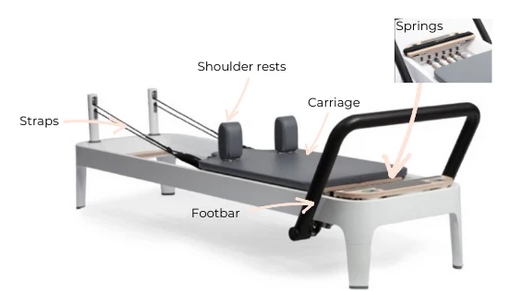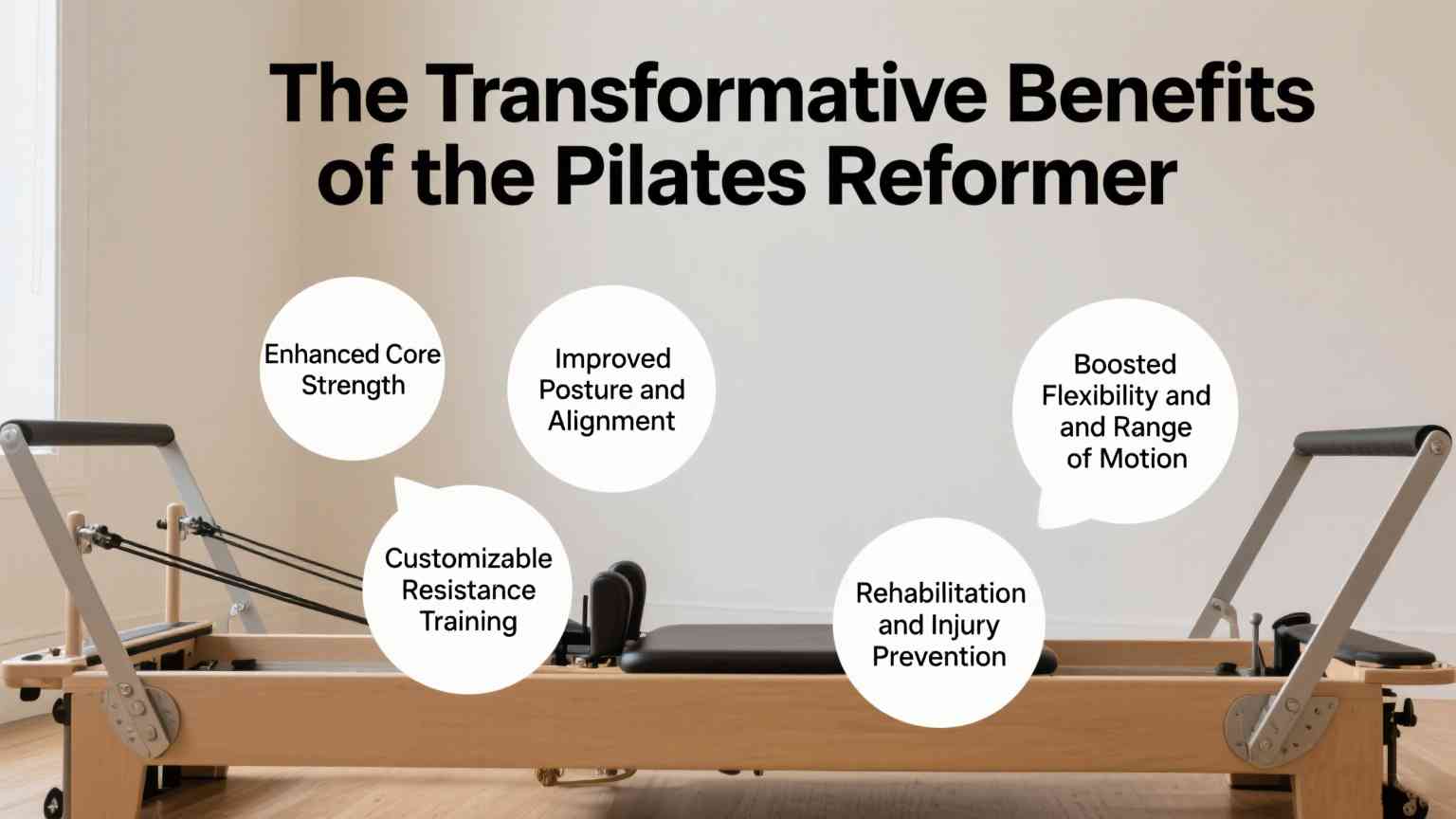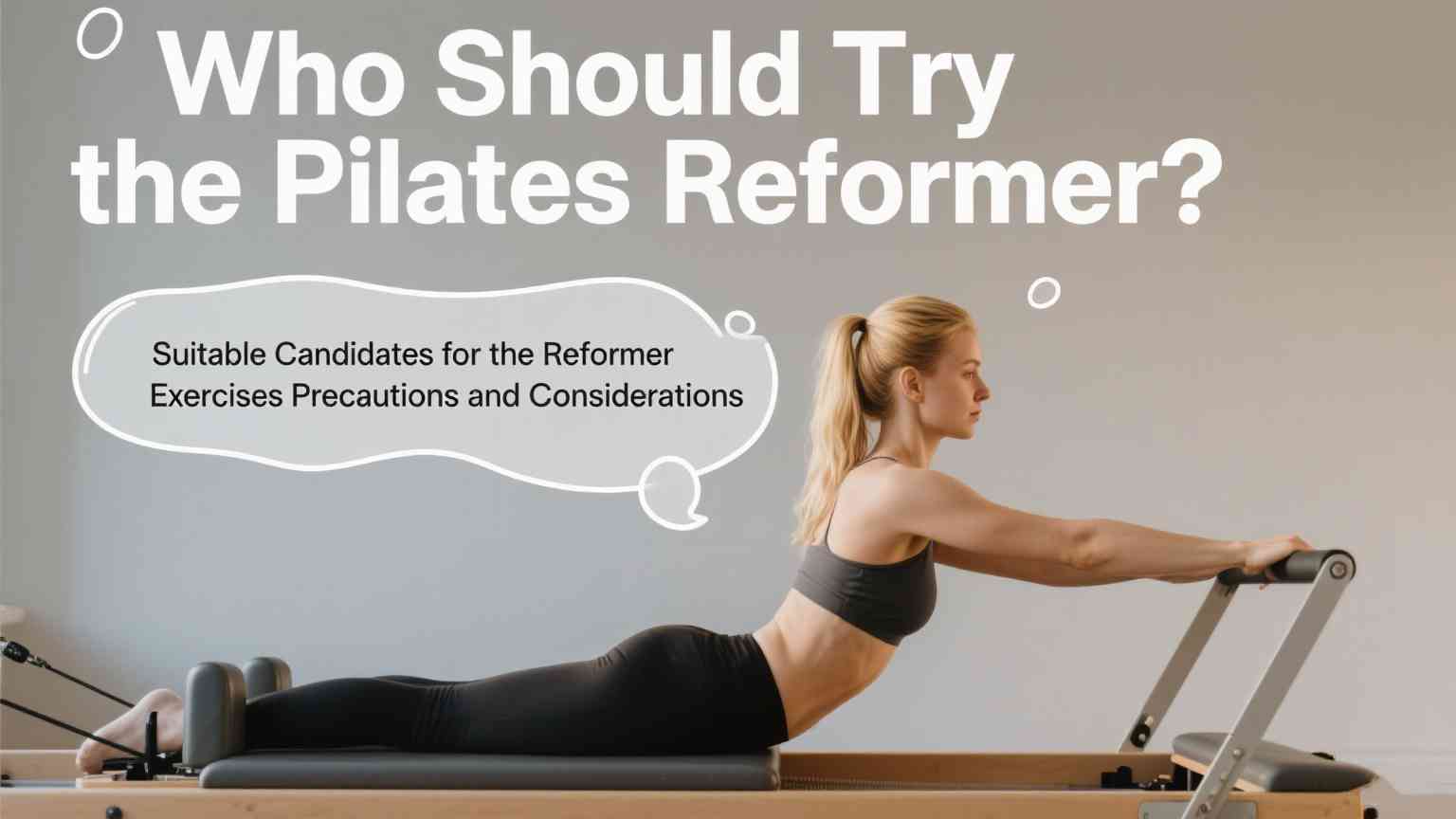The Pilates Reformer offers more than just a workout—it's a full-body training system that strengthens, lengthens, and restores balance. With its unique design and adaptable resistance, it supports movements that enhance both physical health and overall well-being.
✅ The Pilates Reformer: A Brief Overview
Origins and Evolution
The Pilates Reformer was invented in the early 20th century by Joseph Pilates, the founder of the Pilates method. Originally designed to help rehabilitate injured soldiers during World War I, the concept evolved into a versatile exercise machine that supported controlled movement, alignment, and resistance training. Over the decades, the Reformer has been refined with modern materials and ergonomic designs, making it a staple in both fitness studios and rehabilitation clinics worldwide. Its evolution reflects the growing recognition of Pilates as a practice that enhances strength, flexibility, posture, and overall body awareness.
Description of the Reformer Machine
At its core, the Reformer is a bed-like frame with a sliding carriage that moves back and forth on rails. The carriage is connected to adjustable springs that provide varying levels of resistance, allowing exercises to be tailored for beginners or advanced practitioners. Additional components include a footbar, shoulder blocks, and straps with handles, which create countless options for pushing, pulling, and stabilizing the body. This unique setup makes the Reformer adaptable for a wide range of movements, engaging muscles from head to toe while minimizing impact on the joints.

✅ Distinguishing the Reformer from Traditional Pilates
Key Differences
Traditional Pilates is often practiced on a mat using body weight and minimal equipment, focusing on core strength, alignment, and controlled breathing. While effective, mat-based Pilates is somewhat limited in the range and intensity of exercises it offers.
The Reformer, on the other hand, introduces springs, straps, and a moving carriage to the practice. These elements add both resistance and support, enabling deeper stretches, more challenging strength training, and a wider variety of movements. The adjustable resistance also makes the Reformer suitable for all levels, from rehabilitation patients to professional athletes.
The Unique Approach of the Reformer
What makes the Reformer truly unique is its blend of precision, versatility, and support. Unlike traditional mat Pilates, the machine allows practitioners to perform exercises in multiple positions—lying down, sitting, kneeling, or standing—while maintaining correct alignment. The moving carriage challenges stability, encouraging constant engagement of the core and postural muscles. At the same time, the springs can lighten the load for beginners or increase resistance for advanced users.
This adaptability not only enhances strength and flexibility but also provides a low-impact, joint-friendly workout that promotes balance, coordination, and mind-body connection in ways mat Pilates alone cannot.
We are committed to delivering exceptional support and
top-tier service whenever you need it!
✅ The Transformative Benefits of the Pilates Reformer
Enhanced Core Strength
The Reformer's moving carriage and spring resistance demand constant stability, engaging deep abdominal and spinal muscles. Over time, this builds a stronger, more functional core that supports daily movement and athletic performance.
Improved Posture and Alignment
By emphasizing controlled movement and spinal alignment, Reformer exercises help correct muscular imbalances and promote a more upright posture. This is especially valuable for people who sit long hours or struggle with back and shoulder tension.
Boosted Flexibility and Range of Motion
Unlike static stretching, the Reformer combines resistance with dynamic movement, encouraging the body to lengthen while strengthening. This dual action enhances flexibility and mobility, reducing stiffness and improving overall fluidity of movement.

Customizable Resistance Training
The Reformer's adjustable springs allow users to scale the intensity of each exercise. Beginners can start with lighter resistance for guidance and support, while advanced practitioners can increase the load to build strength and endurance.
Rehabilitation and Injury Prevention
Because it is low-impact and highly adaptable, the Reformer is widely used in physical therapy settings. It supports safe movement patterns, strengthens stabilizing muscles, and helps prevent future injuries by improving body mechanics and balance.
✅ Who Should Try the Pilates Reformer?
Suitable Candidates for the Reformer Exercises
The Pilates Reformer is highly versatile, making it suitable for a broad range of people. Beginners can benefit from its supportive design, while experienced athletes can use it to challenge strength, balance, and flexibility. It is also an excellent option for individuals recovering from injury, as the controlled movements and adjustable resistance provide a safe environment to rebuild strength. Office workers, older adults, and anyone seeking to improve posture, mobility, or core stability can find value in Reformer-based training.
Precautions and Considerations
While the Reformer is adaptable, certain groups should approach it with caution. Pregnant women, people with severe osteoporosis, or those with recent injuries should consult a healthcare provider before beginning. Proper guidance from a certified Pilates instructor is recommended, especially for beginners, to ensure correct form and avoid strain. It's also important to progress gradually—starting with lighter resistance and simpler exercises—before advancing to more complex movements.

✅ Conclusion
From improving posture to building core strength and aiding recovery, Reformer Pilates provides benefits that go beyond traditional exercise. Whether you're a beginner or an advanced practitioner, the Reformer can be a transformative tool on your journey to a healthier, stronger, and more flexible body.

Talk To Our Experts
Connect with an NQ expert to discuss your product needs
and get started on your project.
✅ Common Questions About Pilates Reformer
Is the Pilates Reformer suitable for beginners?
Yes, the Pilates Reformer is suitable for beginners because its adjustable springs provide support and resistance that can be tailored to any fitness level. Many find it even easier to start on the Reformer than on the mat, as the machine helps guide movement and alignment. However, beginners are advised to start with professional instruction to ensure correct form and prevent injury.
How often should one use the Reformer for optimal benefits?
Most experts recommend practicing Reformer Pilates 2–3 times per week for optimal benefits. This frequency allows the body enough time to build strength, flexibility, and core stability while also giving muscles adequate recovery time. Beginners may start with 1–2 sessions weekly, then gradually increase as their stamina and technique improve. Consistency is key—regular practice delivers better long-term results than occasional intensive sessions.
Are Reformer exercises safe during pregnancy?
Yes, Reformer Pilates exercises can be safe during pregnancy when properly modified. They help strengthen the core, improve posture, and relieve common discomforts such as back pain and swelling. However, movements that involve lying flat, deep abdominal engagement, or high intensity should be avoided. It is recommended to practice under the guidance of an experienced prenatal Pilates instructor and consult a doctor before starting.
How is the Reformer different from other Pilates equipment?
The Reformer differs from other Pilates equipment primarily in its moving carriage, adjustable springs, and versatile setup. Unlike mat Pilates, which relies on body weight alone, the Reformer provides resistance and support, allowing for a wider range of exercises that target strength, flexibility, and stability. Other Pilates apparatus, like the Cadillac or Chair, focus on specific movement patterns or body positions.
Can I install a Pilates Reformer at home?
Yes, you can install a Pilates Reformer at home, but there are a few considerations to ensure safety and effectiveness. You'll need enough space—typically around 8–10 feet in length—for the machine and full movement range. It's also important to choose a quality Reformer suited for home use and to follow proper assembly instructions or have it professionally installed. Finally, beginners may benefit from online classes or occasional instructor guidance.
Post time: Sep-01-2025
